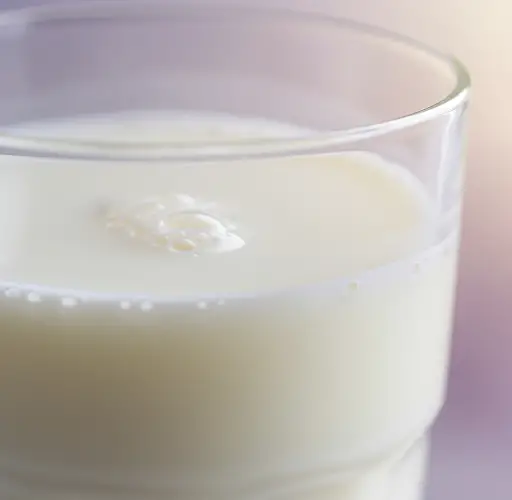How to Use Milk to Protect and Strengthen Your Vegetable Garden in Mid-Summer
Mid-summer presents perfect conditions for the spread of fungal diseases in vegetable gardens. As temperatures rise and periods of rain increase, common pathogens such as Phytophthora (late blight) and downy mildew thrive. These diseases can wreak havoc on crops like tomatoes, cucumbers, potatoes, and other popular vegetables—often leading to substantial damage or even total crop loss if left untreated.
Fortunately, there is a natural, inexpensive, and highly effective method to help protect your plants: milk.
Why Milk Is a Powerful Ally in the Garden
Milk is not only a valuable food source for humans but also a powerful aid in garden care. It acts as a natural remedy for plant protection, disease prevention, pest control, and even fertilization.
When applied to plants, milk creates a thin, protective film on leaves and stems. This barrier helps prevent the entry of fungal spores and other pathogens, reducing the likelihood of infection. In addition to this physical protection, milk contains a wide array of nutrients that enhance plant health and immune response.
The primary beneficial components in milk include:
-
Calcium – Promotes strong cell walls and overall structural health
-
Potassium – Supports flowering and fruit development
-
Magnesium – A key component of chlorophyll for photosynthesis
-
Sulfur, Phosphorus, Copper, Iron, Manganese – Trace minerals that assist in enzyme function and nutrient absorption
When used regularly, milk boosts a plant’s natural defenses, helping it resist both fungal and viral diseases more effectively.
Using Milk to Prevent Fungal Infections
Diseases like late blight and downy mildew often strike after heavy rains or when humidity levels are high. These conditions cause fungal spores to germinate and spread rapidly, particularly on susceptible crops such as tomatoes, potatoes, eggplants, cucumbers, and zucchini.
To protect against these issues, gardeners can apply a diluted milk solution as a preventative treatment. The most effective ratio is:
1 part milk : 10 parts water
This dilution ensures that the milk’s nutrients and protective properties are maintained without causing harm to the plant or attracting unwanted bacterial growth. It’s important not to use milk in its pure form, as undiluted milk can create an overly rich environment that may lead to unpleasant odors or mold development in the soil.
Apply the diluted milk mixture by spraying it evenly over the leaves and stems of the plants. Be sure to coat both the upper and lower surfaces of the leaves, as fungal spores often cling to the undersides. Treatments should be repeated every 7 to 14 days during the high-risk season or after heavy rain.
Milk as a Natural Insect Repellent
Beyond its role in disease prevention, milk also acts as a gentle insect repellent, particularly against aphids. Aphids are small, soft-bodied insects that cluster on young shoots and leaves, sucking sap and spreading viruses.
To enhance the milk’s pest-control properties, you can add a small amount of cooking oil to the diluted milk solution. The oil helps the mixture adhere more effectively to plant surfaces and suffocates soft-bodied insects on contact.
For this purpose, use:
-
1 part milk
-
10 parts water
-
A few drops of cooking oil (preferably vegetable oil)
This mixture can be sprayed directly onto affected areas, focusing on clusters where aphids are present. Repeat applications as needed until the infestation is under control.
Milk as a Gentle Fertilizer
In addition to being a protector, milk is a mild but effective organic fertilizer. Its nutrient content promotes healthy growth, boosts immune strength, and improves the uptake and utilization of nutrients already present in the soil. Treated plants often show improved vigor, greener foliage, and more consistent fruiting.
While milk should not replace regular fertilization practices, it can be a supportive supplement in a well-balanced garden routine. Its benefits are particularly noticeable when used in conjunction with compost, mulch, and organic matter that improve soil structure and fertility.
Best Practices for Using Milk in the Garden
-
Use only fresh, non-flavored milk. Spoiled or sweetened milk can attract pests and lead to undesirable results.
-
Spray in the morning or late afternoon. Avoid midday sun to prevent leaf burn from the milk mixture.
-
Apply regularly during the growing season. Especially important after rain or when signs of disease pressure are present.
-
Always dilute properly. A 1:10 ratio of milk to water is sufficient for both disease prevention and foliar feeding.
-
Avoid overuse. Too much milk can create sticky residues that attract other issues.
A Simple, Sustainable Solution
Using milk in the garden is a time-tested, low-cost strategy for protecting and nurturing vegetable crops during their most vulnerable season. Whether combating fungal infections, repelling pests, or giving plants a gentle nutrient boost, milk proves to be a versatile and eco-friendly tool that any gardener can use.
As with all natural treatments, consistency and observation are key. With regular care and attention, this simple remedy can help maintain a thriving, resilient garden—even in the heat and humidity of mid-summer.



